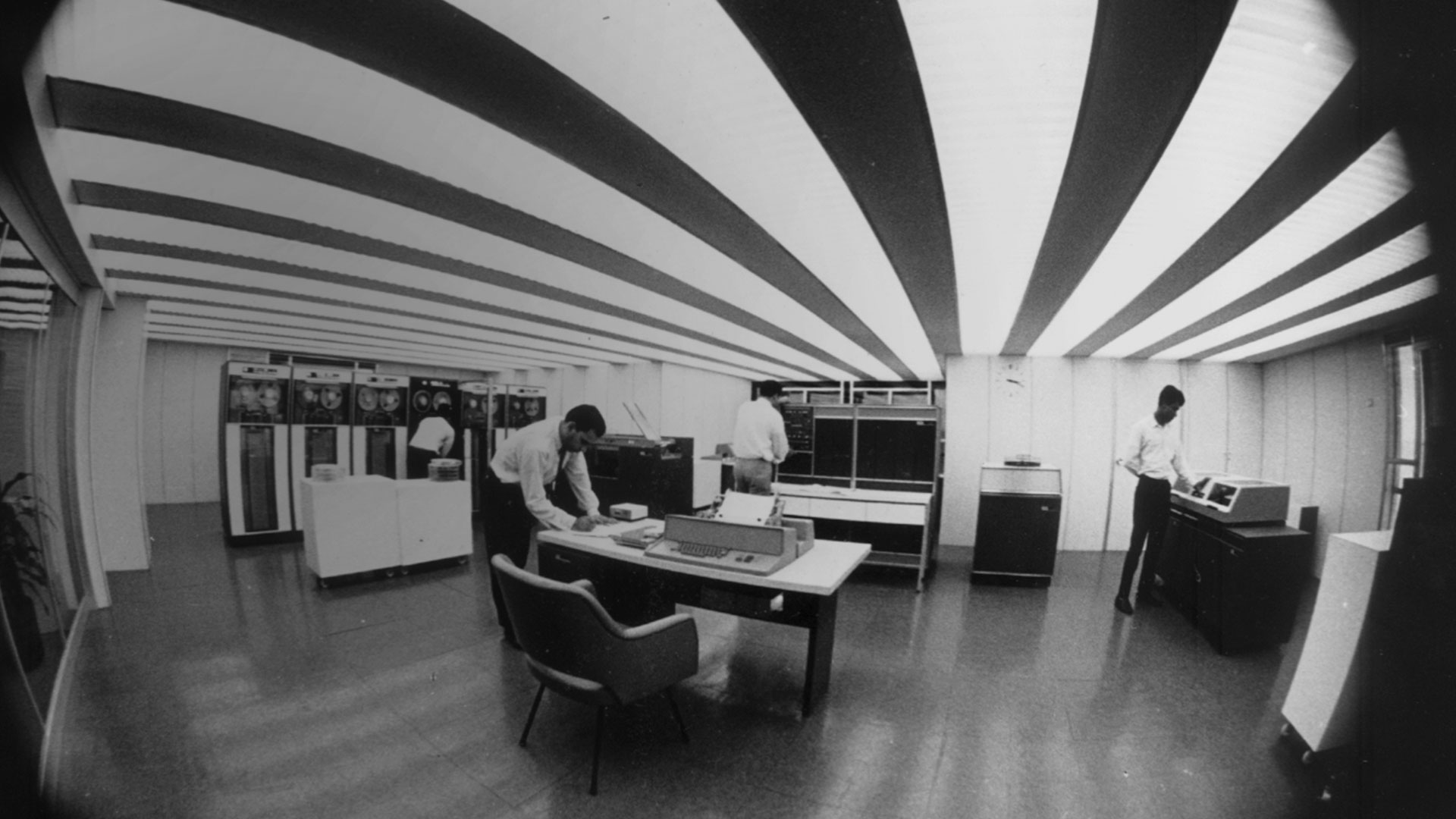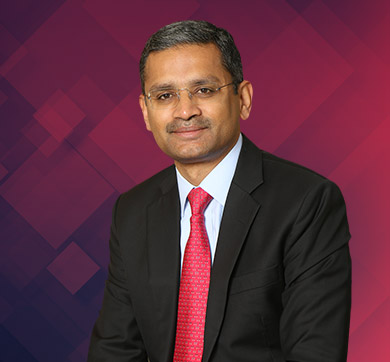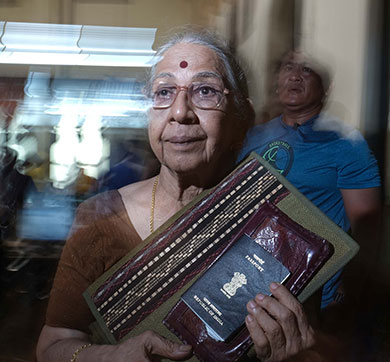February 2021 | 1350 words | 5-minute read
The origin of the Indian Information Technology (IT) industry is interwoven with the history of Tata Consultancy Services (TCS).
Established in 1968, TCS pioneered the IT industry back then and is globally the fastest growing IT services brand today. TCS has not only helped clients transform their businesses but has also reinvented itself well ahead of every technology wave over the past 50 years.
This photo feature brings together the journey from the 3rd industrial revolution to the 4th industrial revolution unfolding amidst us, from the lens of one of our own, TCS.
1968–1978
When Tata Computer Centre — a shared utility space set up in 1966 at Nirmal Building, Nariman Point, to address the computing needs of group companies — went under-utilised, the leadership at Bombay House decided to remodel it as Tata Consultancy Services (TCS).
1973
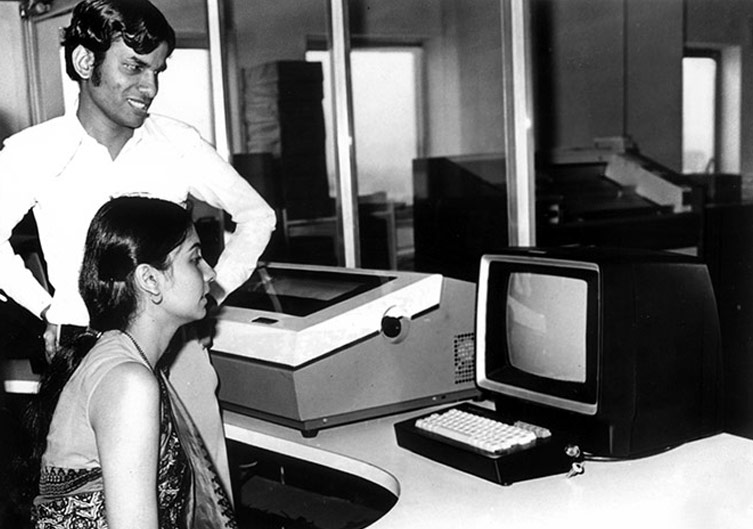
This year marked the start of TCS’ partnership with Burroughs to distribute and support Burroughs products in India and to build software for export to various Burroughs units and clients across the world. The Hospital Accounting system conversion from a Burroughs Medium Systems COBOL to a Burroughs Small Systems COBOL — which the TCS team managed without a Burroughs computer, using a filter in assembly language on their ICL 1903 to parse the source code — was historic for being the first recorded instance of an offshore software delivery, done using automation, 45 years ago.
1974
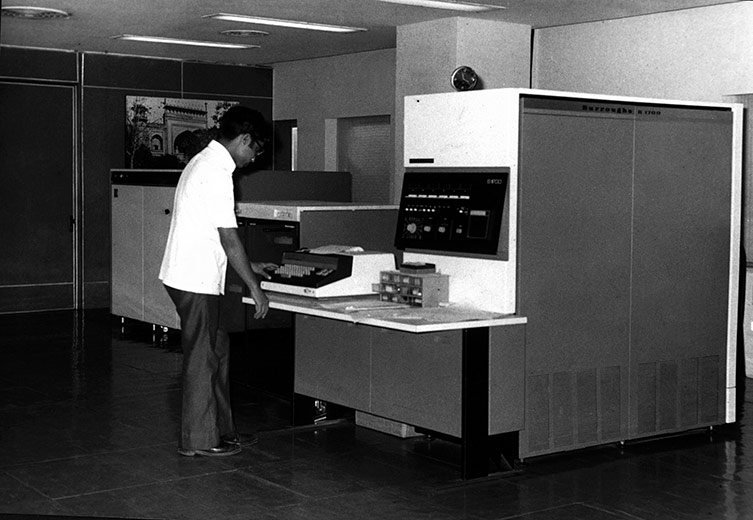
This year, S Mahalingam — then a young chartered accountant who was part of a six-member team of coders based in Mumbai (then Bombay) with two members onsite — wrote specifications for a financial accounting software package for Burroughs computers, which was sold to a couple of building societies in the UK. It was TCS’ first-ever project involving the complete software development lifecycle.
1976
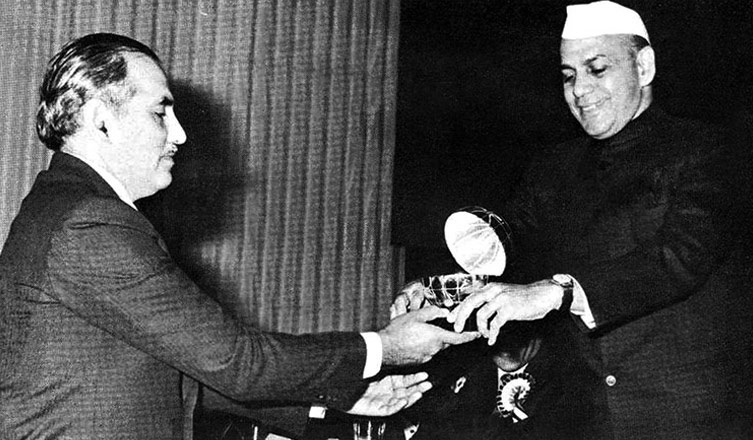
By 1976, TCS had crossed over $1 million in export revenues, winning the top exporter award from the Engineering Export Promotion Council, 1976-77.
1979–1988
The next decade saw TCS evolve rapidly. From setting up its first overseas sales office in New York in 1979, headed by S Ramadorai, to bagging their first and largest offshore project out of the Delhi office for Swiss National Bank (SNB). The project teams realised the value of meticulous planning to meet deadlines with precision and emphasis on quality.
1981

The scale and complexity of creating an end-to-end advanced system to manage customer relationships for Western Trust and Savings Limited (WTSL) in 1981, which involved 135-person-years’ effort, gave TCS an in-depth knowledge of the retail banking sector, the know-how to execute large projects and mastery over IBM mainframe technology.
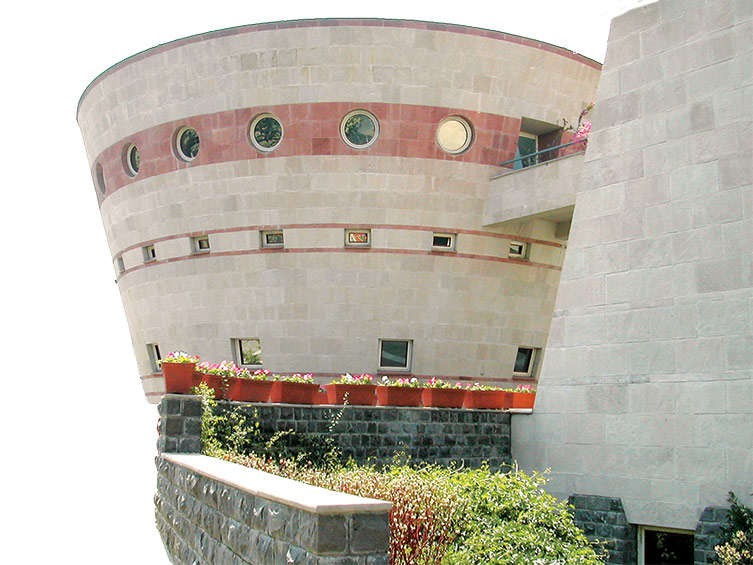
Also, this year saw the establishment of the Tata Research Development and Design Centre (TRDDC). Envisioned by FC Kohli, it was the paradigm shift in what became TCS’ trademark focus on computer aided software engineering — a structured, tool-driven approach to software development using process automation.
1982

Between 1982-88, TCS saw an explosion of new technological inventions. These included the Advanced Data Dictionary (ADDICT), a global repository of project information with a vast and advanced nomenclature, giving users a holistic view of a project; the Falcon (Fast Access Local Computer Network), the first fault-tolerant, multi-user, multitasking Windows-type capability; and Casepac, a computer-aided software engineering tool for IBM mainframes.
By 1987, the IBM mainframe Centre of Excellence was set up in Chennai (then Madras) with the installation of the imported IBM 3090 mainframe, making it the largest mainframe site in India for several years; thereby opening up IBM mainframe business opportunities for TCS.
1989–1998
This decade saw some major shifts, with TCS winning and successfully delivering large deals that catapulted it on the global map. It also marked a change in leadership with the founding CEO handing over the baton to the next generation of leaders.
1989
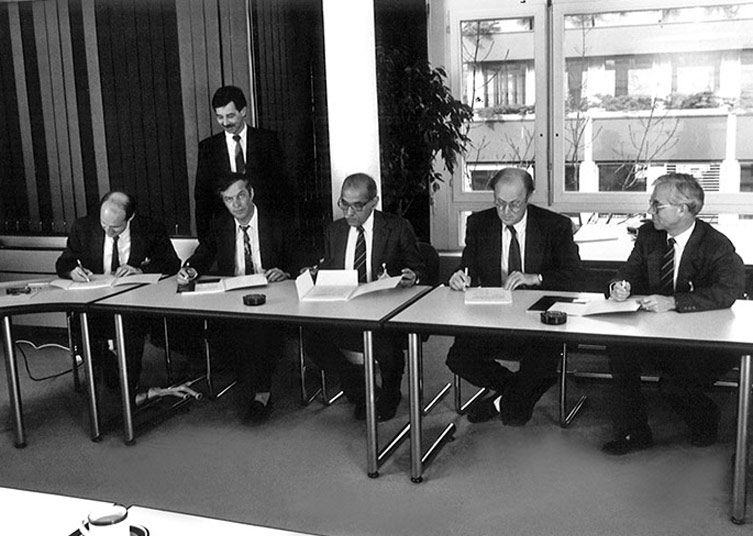
The year started with TCS signing a $10 million deal with the Swiss Securities Clearing Corporation (SEGA) to design, build, and implement the world’s first real-time domestic and cross-border securities clearing and settlement system.
1996
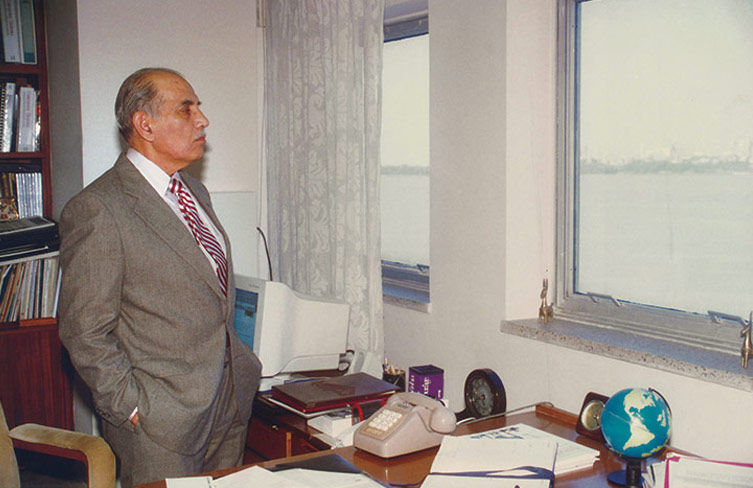
This year saw FC Kohli stepping down from his executive role, after being at the helm for 22 years, and S Ramadorai taking over as CEO.
1997
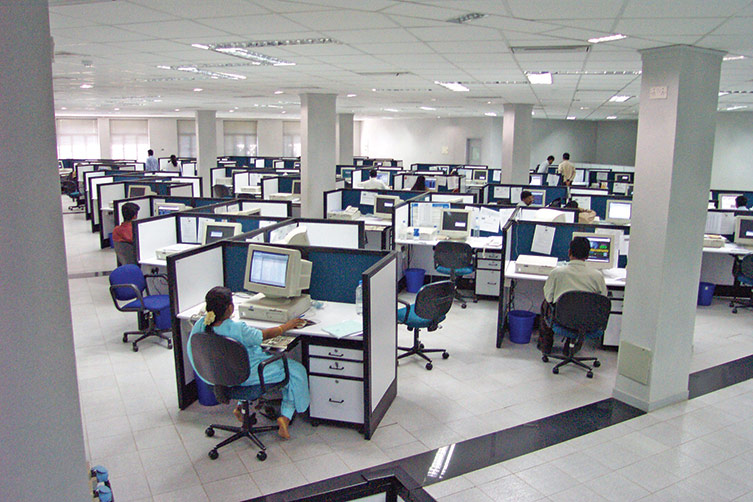
TCS Ambattur, the first of its kind software factory, was established. It resolved the Y2K bug by remediating about 700 million lines of code, by leveraging special, automated tools developed for the Y2K conversion.
1999–2009
The core of the Global Network Delivery Model™ (GNDM™) — across 140 centres in 19 countries — was formed in the early 2000s. The global e-business development facility saw TCS’ business expand exponentially in India and overseas with operations in China, Uruguay, Hungary and several centres across the USA.
2003
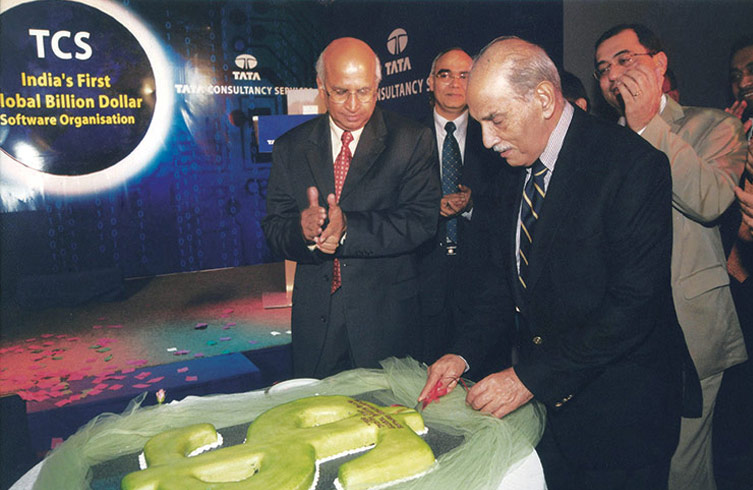
Having signed its first $100 million deal with GE Medical Systems, the largest single contract ever won by an Indian software services company till then, TCS crossed $1 billion mark in annual revenue a year later in 2003. Then CEO S Ramadorai formally unveiled the vision statement, ‘Top 10 by 2010’, a goal achieved in 2009 with TCS ranking among the top 10 global IT service-providers in terms of revenue, profitability, number of people, and market capitalisation.
2004
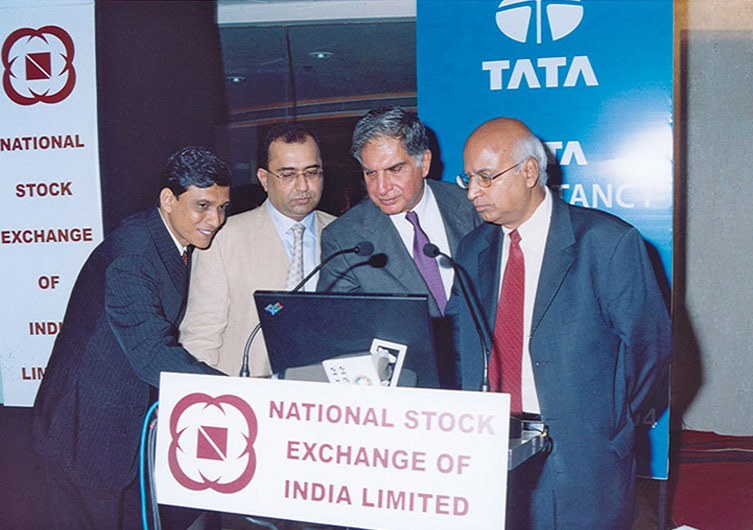
This year saw TCS debut at the National Stock Exchange (NSE) and Bombay Stock Exchange with an initial public offering (IPO ), termed the largest in India at the time by a private sector company.
2009
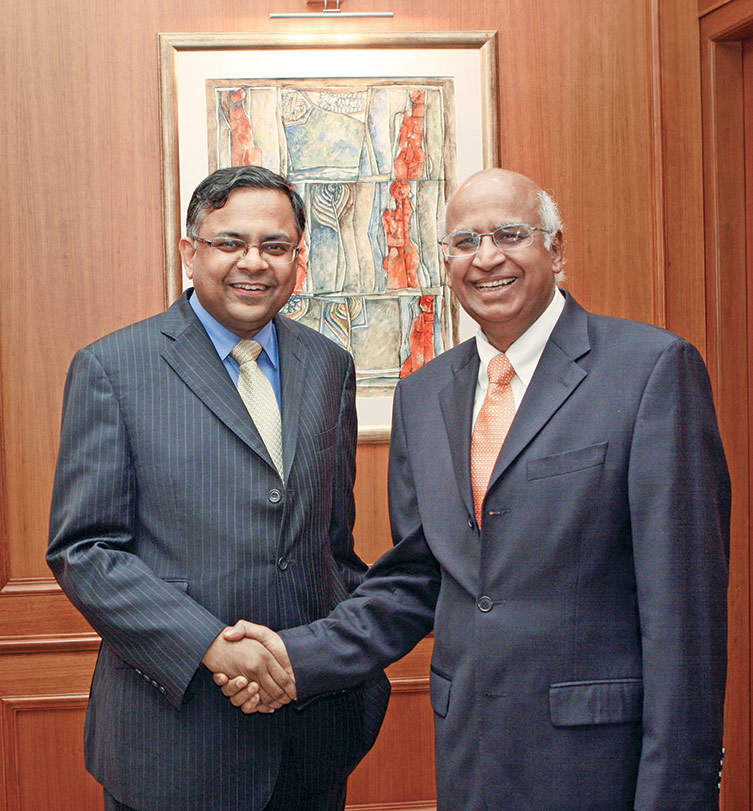
This year, TCS reorganised itself into a customer-centric agile structure, with each vertical owning its own P&L. In the same year, N Chandrasekaran (Chandra) took over as CEO & MD, succeeding S Ramadorai who led TCS for 13 successful years.
2010-2020
TCS bagged large projects like the Citigroup project and the Rs 10 billion Passport Automation project of the External Affairs Ministry, Government of India. Putting N Chandra’s ‘Default is Digital’ term into practice, TCS drew up a Digital Reimagination framework to help enterprises become smarter and deliver a superior customer experience. To reskill its workforce at scale, the company launched the Digital Learning platform that offers multi-layered and multi-device learning formats. This decade also saw cloud platforms crossing the $100 million revenue mark. In February 2017, the then CFO Rajesh Gopinathan, now CEO & MD, TCS, took over the reins from N Chandrasekaran who was appointed as the Chairman of the Tata group.
2014
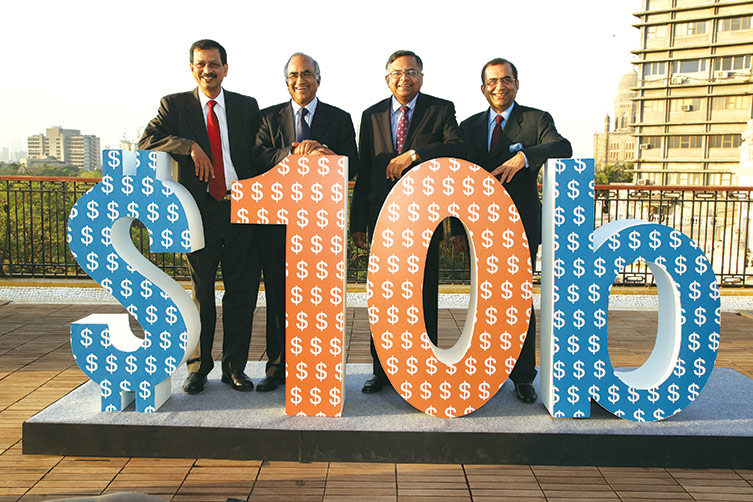
Crossing $10 billion in revenue next, TCS went on to acquire French IT services firm ALTI SA, one of the top five package implementers in France; and in 2014, Mitsubishi Corporation’s IT arm in Japan followed by Saudi Arabia’s first all-women BPO centre in Riyadh.
2017
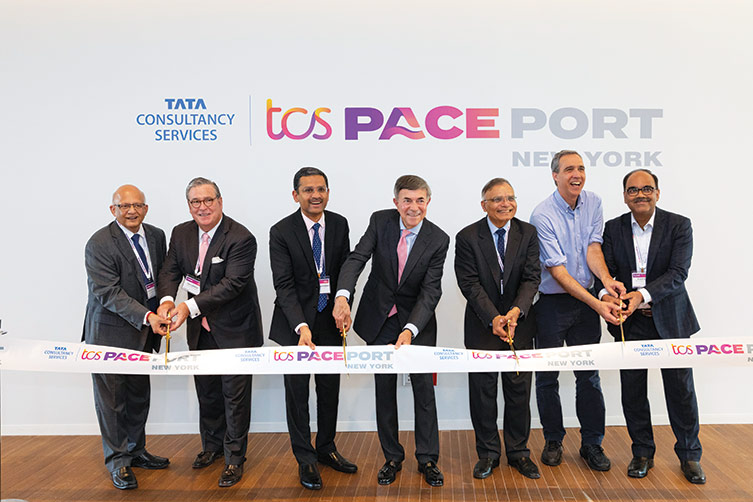
Business 4.0™ is the wave of digitally-enabled change breaking over organisations across the world. This new-age transformation paradigm, developed by TCS as a thought leadership framework in 2017, identifies four critical business behaviours — mass personalisation, creating exponential value, leveraging ecosystems, and embracing risk built on the mindset of harnessing abundance. Using the four technology pillars: cloud, intelligence, agile and automation, companies can grow, sustain and adapt on a large scale in a future-ready manner.
TCS today is voted globally as the fastest growing IT services brand of the decade. It is not only one of the best companies to work for, fostering a culture of gender and geographic diversity, but also the first IT firm to top the $100 billion market capital.
Even in the face of unforeseen and unprecedented events, like the ongoing Covid-19 pandemic, Business 4.0™ organisations like TCS which are purposeled, resilient and adaptable are best placed to recast themselves successfully for the post-pandemic world.
—Tejal Pandey
Photos courtesy Tata Consultancy Services Archives


